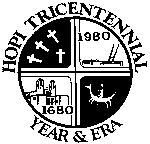History, Department of

Hopi Nation: Essays on Indigenous Art, Culture, History, and Law
Date of this Version
September 2008
Document Type
Book Chapter
Abstract
“Everything has an essence or life force, and humans must interact with these or fail to survive.”
It is not known where the Kachina Cult originated, but some evidence points to a Meso-American origin, brought possibly with the clans which migrated from north to south and north again. There are a few archaeological hints which indicate that there was a viable Kachina Cult by the time the Hopi settled at the center of their world in 1100. The Kachina Cult is shared with all the other Pueblo peoples who live to the east, from Zuni to Taos and formerly Pecos on the eastern border. Each of these groups have their own substantive perceptions and practices of the Kachina Cult.
The central theme of the Kachina Cult is the presence of life in all objects that fill the universe. Everything has an essence or a life force, and humans must interact with these or fail to survive. It is much easier to interact with impersonal forces if they are given life forms and if patterns of reciprocity and mutual obligations are established. It is these visualizations, these personifications that are the kachinas.
To understand the relationships that exist between humans and kachinas, a tentative model of their cosmos can be constructed. It consists of either two states of being occupying the same space or as two halves of a sphere. In the spherical model, half of the universe is an underworld or the world of the supernatural, and the other half is the normal, real world. The sun circles endlessly beyond the immediate control of either hemisphere yet interacts with both. The contents of one hemisphere are the mirror image of the other, but where one half is composed of objects and beings of solidity and mass, the other is an ethereal, imponderable world of cloud-like beings. Evidence for this world lies in the clouds that rise above mountain peaks, the smoke from burning objects, the fog that arises from water on a cold morning, steam from food, the breath of living beings that leaves them when they die and passes into the other world. This is the world of kachinas, a place where the bodies of the dead go to continue interacting with their universe, but in a new form—alter egos of their former life.
Kachinas are the life forces of the cosmos that surround the Hopis on either plane, living or dead. Each of these forces, regardless of their physical appearance in the normal world, is a pseudo-morphic human in the supernatural world. These beings possess attributes that humans do not have, for kachinas can make it rain, cause the crops to grow well, or bring a multitude of other benefits if they are properly treated. They are not the ancestors of the Hopi but beings with whom all Hopi have interacted for mutual benefit through the centuries. The appearance of each kachina is dictated by its role as visually interpreted by Hopis and distilled through time to a traditional form. The more powerful the potential of the kachina, the more abstract are its features and symbols. This second form of the kachinas may be seen when the men who impersonate these spirits appear in ceremonies or dances in the village plazas or kivas from late December to late July as called for by the complex Hopi ceremonial calendar. It is believed that by donning mask, costume, and paint, the impersonator becomes imbued with the kachina spirit, that for the time of the dance kachina and man are one.


Comments
Published in Hopi Nation: Essays on Indigenous Art, Culture, History, and Law, edited by Edna Glenn, John R. Wunder, Willard Hughes Rollings, and C. L. Martin (Lincoln, NE: UNL Digital Commons, 2008). Copyright © 2008 the Estate of Edna Glenn, Willard Hughes Rollings, Abbott Sekaquaptewa, Barton Wright, Michael Kabotie, Terrance Talaswaima, Alice Schlegel, Robert H. Ames, Peter Iverson, and John R. Wunder. All images and artwork are copyright by the individual artists; for a listing see pages 9-14.